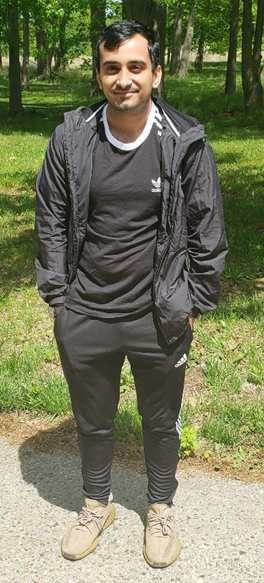Vincent DePinto, Verrazzano Class of 2022, completed major in Nursing
I conducted my capstone project with the department’s chairperson, Dr. DiCicco-Bloom. We brainstormed on what form my capstone would take and decided a literature review would be the most appropriate as it would allow me to explore the current state of my topic according to nursing research, and was well suited to my major.
The first steps in beginning my capstone was to gather preliminary research about my topic, research how to conduct a literature review, and how the paper would be formatted. As a nurse researcher herself, my mentor was instrumental in helping me understand what a literature review consists of, and what was expected. Something I always struggled with was if I had to write a paper and I wasn't given a template or structure as a guide. I had to construct the layout of this review while keeping in mind the format and the research topic.
I feel this experience has helped me in both academic and personal areas. Most notably, it has given me a significant amount of confidence in my skills as a writer, researcher, and as a nurse when appraising literature. I was able to understand the main themes of the literature I reviewed, and construct a well thought out paper.
I also learned how to work with a mentor in my profession. This was initially difficult for me as I was not sure how often to reach out and update my mentor on my progress. This lack of communication led to my mentor reaching out to me, and telling me that it was my responsibility to keep in touch and share my progress. I felt a bit embarrassed to be told this by my mentor and the head of my department, but it allowed me to learn that my communication and time management skills needed to be improved.
Another important thing I learned from my capstone was public speaking and presenting my research. I had to virtually present my capstone at the Undergraduate Research conference. Even though there were only eight people watching my presentation, I was incredibly nervous to be presenting my research to a highly knowledgeable and academic group of people. For the first 3 minutes, I was internally freaking out. After the initial shock of beginning my presentation, I was able to calm down and become more comfortable. I think I will still be a bit nervous presenting in the future, but I do recognize the confidence this experience has given me for future public speaking endeavors.
I was very interested to read about my topic in the literature, especially the sections that detailed study limitations, and recommendations for future research. In this regard, I had several ideas about where future research could lead my topic. There were some gaps in the literature in regard to testing certain alternate sites (such as the earlobe) during unsteady glycemic states. I think future research could compare venous and fingerstick blood sugar measurements to alternate site measurements, and create a specific blood sugar range for alternate sites.
Another area of interest was the effect of alternate site testing (AST) on glycemic control. In my review, I found one study that concluded the use of AST did not improve glycemic control. I would like to see this study repeated so that the results are replicable, and the conclusion can be further supported. The studies I looked at were either experimental, or quasi-experimental. I would be fascinated to see what findings qualitative studies produce. I wonder if patient interviews could produce interesting research questions regarding AST, and guide future research.
One thing I am particularly interested in is the possibility of AST being implemented into practice. When I am administering insulin, I often ask or am told by my patients the site they prefer. I would be interested to see patients having a preferred testing site, just as they might have a preferred insulin administration site.
I feel continuing this research, and potentially implementing AST into clinical practice could provide healthcare workers with additional methods to measure blood sugar, and give patients a greater sense of control over their disease process.







